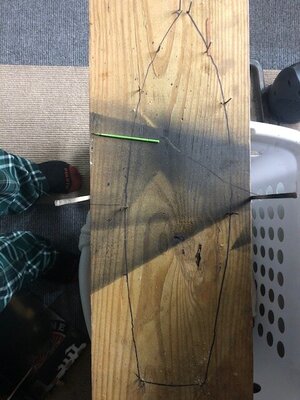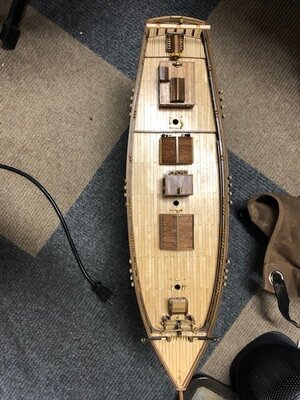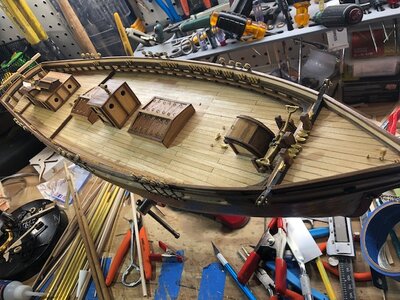Having difficulty shaping handrails. The 5mm strips provided are made of walnut and about 300mm in length. I've soaked them in hot water and then used an iron to bend the strip at the radius. I The strip is then put on pin board to dry . Eventhough I tried the technique several times the curvature is hardly noticeable. Any other solutions?
-

Win a Free Custom Engraved Brass Coin!!!
As a way to introduce our brass coins to the community, we will raffle off a free coin during the month of August. Follow link ABOVE for instructions for entering.
You are using an out of date browser. It may not display this or other websites correctly.
You should upgrade or use an alternative browser.
You should upgrade or use an alternative browser.
Two possibilities if you have the right sizes of wood. 1) Saw the curved sections of the rails out of sheet wood. 2) Soak thinner pieces and bend to shape then glue together to form a laminate.
I should note: I sometimes use clamps to keep the wood/rail flat.
I have had this same problem on several of my builds…I ended up getting a sheet of the wood needed the same thickness as the rail then once I trace the rail curve needed I cut it out from the sheet. I limit the cut curve to the point where it begins to run straight and then I can butt the straight rail pieces.
I use the same approach, especially for top rails which lay flat and cannot be bent.I have had this same problem on several of my builds…I ended up getting a sheet of the wood needed the same thickness as the rail then once I trace the rail curve needed I cut it out from the sheet. I limit the cut curve to the point where it begins to run straight and then I can butt the straight rail pieces.
danielsje said:Having difficulty shaping handrails. The 5mm strips provided are made of walnut and about 300mm in length. I've soaked them in hot water and then used an iron to bend the strip at the radius. I The strip is then put on pin board to dry . Eventhough I tried the technique several times the curvature is hardly noticeable. Any other solutions?
"I have had this same problem on several of my builds…I ended up getting a sheet of the wood needed the same thickness as the rail then once I trace the rail curve needed I cut it out from the sheet. I limit the cut curve to the point where it begins to run straight and then I can butt the straight rail pieces.
I use the same approach, especially for top rails which lay flat and cannot be bent. "
AS DANIEL AND THOMAS SAID : I use the same approach, it works perfectly .
- Joined
- Jun 17, 2021
- Messages
- 3,129
- Points
- 588

You can laminate handrails by cutting strips of appropriate wood, milled square in cross section to the thickness of the rail, and cut to appropriate length. then glue the strips side by side working from center out to either side (I use CA) along the top edge of the bulwark until the desired width is achieved . you can vary the length of the strips in order to facilitate ease of positioning and glue set time. Vary the lengths if laid up in sections, so that you don't end up with a single butt end line across the width of the rail. The greatest care must be given in laying down the center piece (or couple of pieces) along the top of the bulwark as it defines the shape of the overall curve. I like mahogany as it tends to obscure the seams and crosscuts. Cherry, Pear, Boxwood, Walnut all look fine .The seams are irrelevant if sealed and painted. I find that no steaming is necessary using this technique as strips cut square in cross section usually bend right around a long gentle curve, If confronted with a tight curve, wet the wood with room temp water and bend using a drum head fitting on a soldering iron. This type of bending tool is available from Model Shipways(expo). You can re-wet and re-bend a strip or plank endlessly, using this tool, sculpting it to shape until you get it just right. You can even give the part a twist while bending it if necessary and it will hold it's shape with great precision.
Last edited:
- Joined
- Oct 17, 2020
- Messages
- 1,677
- Points
- 488

good evening, excuse me, I don't think the handrails are the whole length of the broadside,I should note: I sometimes use clamps to keep the wood/rail flat.
Kurt Konrath
Kurt Konrath
Another option is that used by some real ship builders, is to use multiple shorter pieces of wood and cut the curves and joints into them so it looks like one long piece of wood.







